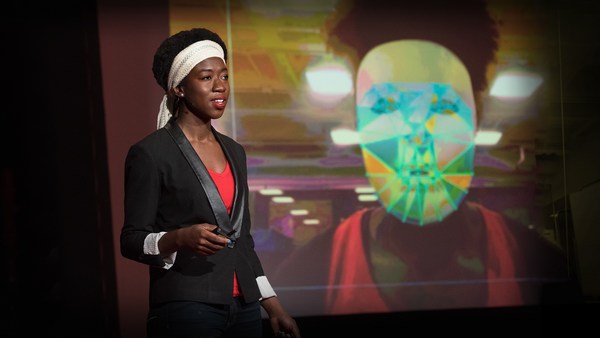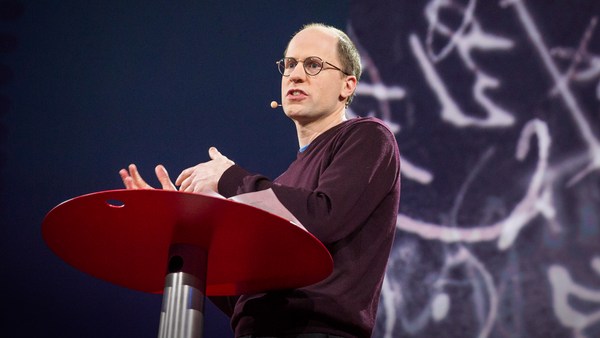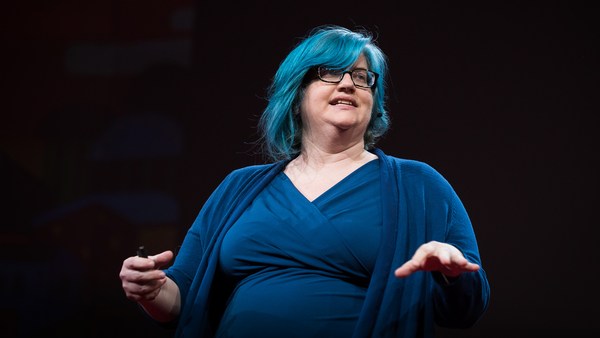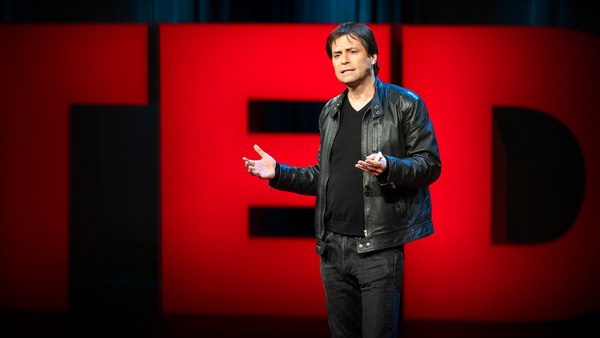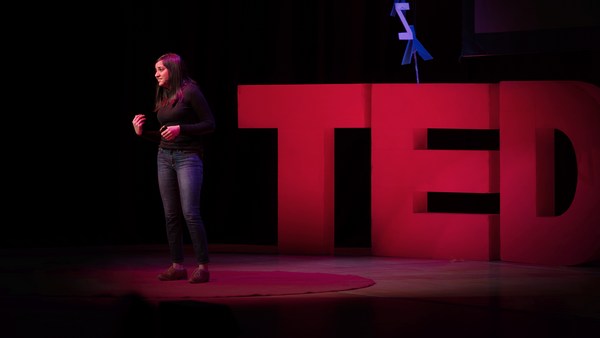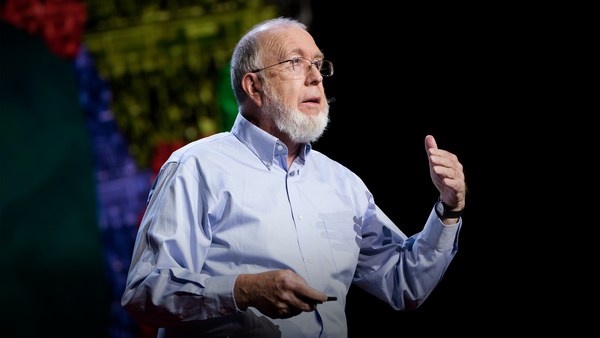I work on helping computers communicate about the world around us. There are a lot of ways to do this, and I like to focus on helping computers to talk about what they see and understand. Given a scene like this, a modern computer-vision algorithm can tell you that there's a woman and there's a dog. It can tell you that the woman is smiling. It might even be able to tell you that the dog is incredibly cute. I work on this problem thinking about how humans understand and process the world. The thoughts, memories and stories that a scene like this might evoke for humans. All the interconnections of related situations. Maybe you've seen a dog like this one before, or you've spent time running on a beach like this one, and that further evokes thoughts and memories of a past vacation, past times to the beach, times spent running around with other dogs. One of my guiding principles is that by helping computers to understand what it's like to have these experiences, to understand what we share and believe and feel, then we're in a great position to start evolving computer technology in a way that's complementary with our own experiences.
So, digging more deeply into this, a few years ago I began working on helping computers to generate human-like stories from sequences of images. So, one day, I was working with my computer to ask it what it thought about a trip to Australia. It took a look at the pictures, and it saw a koala. It didn't know what the koala was, but it said it thought it was an interesting-looking creature. Then I shared with it a sequence of images about a house burning down. It took a look at the images and it said, "This is an amazing view! This is spectacular!" It sent chills down my spine. It saw a horrible, life-changing and life-destroying event and thought it was something positive. I realized that it recognized the contrast, the reds, the yellows, and thought it was something worth remarking on positively. And part of why it was doing this was because most of the images I had given it were positive images. That's because people tend to share positive images when they talk about their experiences. When was the last time you saw a selfie at a funeral?
I realized that, as I worked on improving AI task by task, dataset by dataset, that I was creating massive gaps, holes and blind spots in what it could understand. And while doing so, I was encoding all kinds of biases. Biases that reflect a limited viewpoint, limited to a single dataset -- biases that can reflect human biases found in the data, such as prejudice and stereotyping. I thought back to the evolution of the technology that brought me to where I was that day -- how the first color images were calibrated against a white woman's skin, meaning that color photography was biased against black faces. And that same bias, that same blind spot continued well into the '90s. And the same blind spot continues even today in how well we can recognize different people's faces in facial recognition technology. I though about the state of the art in research today, where we tend to limit our thinking to one dataset and one problem. And that in doing so, we were creating more blind spots and biases that the AI could further amplify.
I realized then that we had to think deeply about how the technology we work on today looks in five years, in 10 years. Humans evolve slowly, with time to correct for issues in the interaction of humans and their environment. In contrast, artificial intelligence is evolving at an incredibly fast rate. And that means that it really matters that we think about this carefully right now -- that we reflect on our own blind spots, our own biases, and think about how that's informing the technology we're creating and discuss what the technology of today will mean for tomorrow.
CEOs and scientists have weighed in on what they think the artificial intelligence technology of the future will be. Stephen Hawking warns that "Artificial intelligence could end mankind." Elon Musk warns that it's an existential risk and one of the greatest risks that we face as a civilization. Bill Gates has made the point, "I don't understand why people aren't more concerned." But these views -- they're part of the story. The math, the models, the basic building blocks of artificial intelligence are something that we call access and all work with. We have open-source tools for machine learning and intelligence that we can contribute to. And beyond that, we can share our experience. We can share our experiences with technology and how it concerns us and how it excites us. We can discuss what we love. We can communicate with foresight about the aspects of technology that could be more beneficial or could be more problematic over time.
If we all focus on opening up the discussion on AI with foresight towards the future, this will help create a general conversation and awareness about what AI is now, what it can become and all the things that we need to do in order to enable that outcome that best suits us. We already see and know this in the technology that we use today. We use smart phones and digital assistants and Roombas. Are they evil? Maybe sometimes. Are they beneficial? Yes, they're that, too. And they're not all the same. And there you already see a light shining on what the future holds. The future continues on from what we build and create right now. We set into motion that domino effect that carves out AI's evolutionary path.
In our time right now, we shape the AI of tomorrow. Technology that immerses us in augmented realities bringing to life past worlds. Technology that helps people to share their experiences when they have difficulty communicating. Technology built on understanding the streaming visual worlds used as technology for self-driving cars. Technology built on understanding images and generating language, evolving into technology that helps people who are visually impaired be better able to access the visual world. And we also see how technology can lead to problems. We have technology today that analyzes physical characteristics we're born with -- such as the color of our skin or the look of our face -- in order to determine whether or not we might be criminals or terrorists. We have technology that crunches through our data, even data relating to our gender or our race, in order to determine whether or not we might get a loan. All that we see now is a snapshot in the evolution of artificial intelligence. Because where we are right now, is within a moment of that evolution. That means that what we do now will affect what happens down the line and in the future.
If we want AI to evolve in a way that helps humans, then we need to define the goals and strategies that enable that path now. What I'd like to see is something that fits well with humans, with our culture and with the environment. Technology that aids and assists those of us with neurological conditions or other disabilities in order to make life equally challenging for everyone. Technology that works regardless of your demographics or the color of your skin. And so today, what I focus on is the technology for tomorrow and for 10 years from now.
AI can turn out in many different ways. But in this case, it isn't a self-driving car without any destination. This is the car that we are driving. We choose when to speed up and when to slow down. We choose if we need to make a turn. We choose what the AI of the future will be. There's a vast playing field of all the things that artificial intelligence can become. It will become many things. And it's up to us now, in order to figure out what we need to put in place to make sure the outcomes of artificial intelligence are the ones that will be better for all of us.
Thank you.
(Applause)
